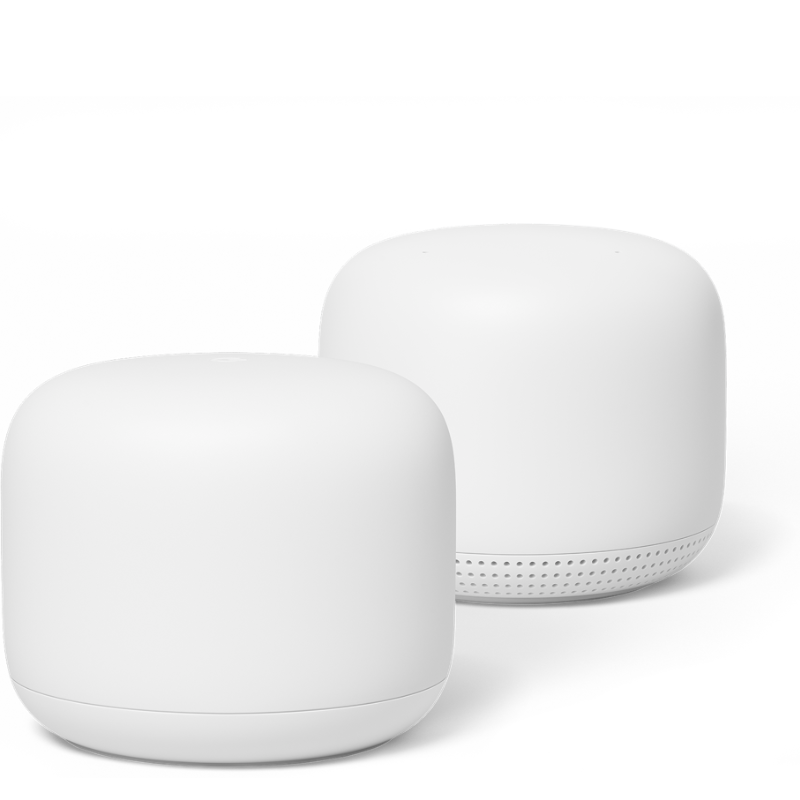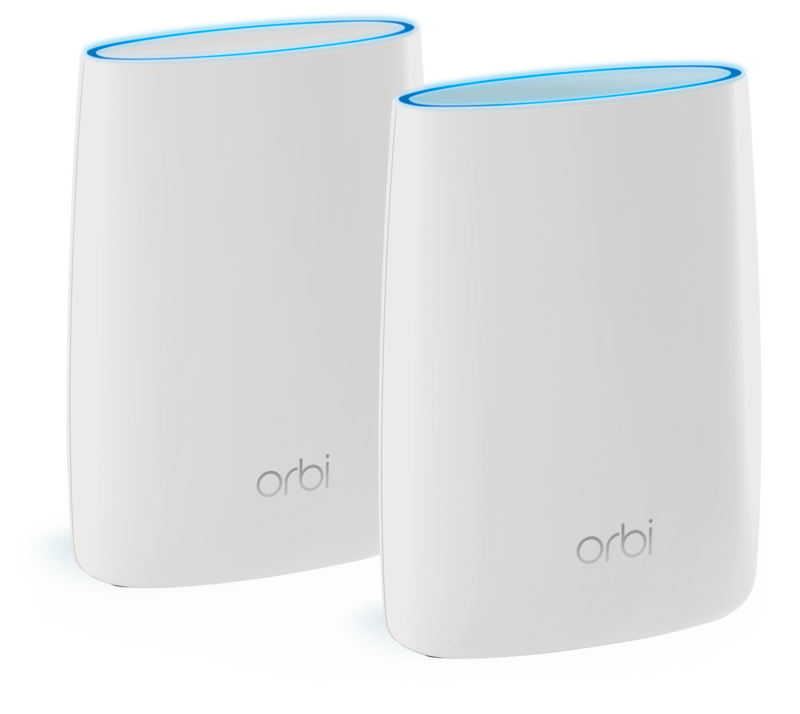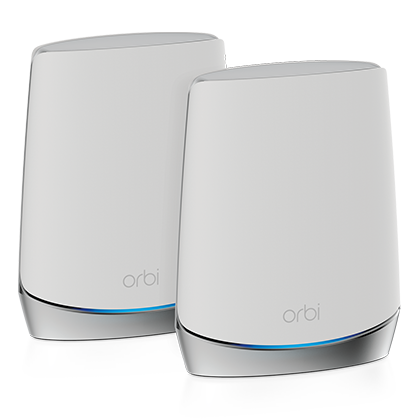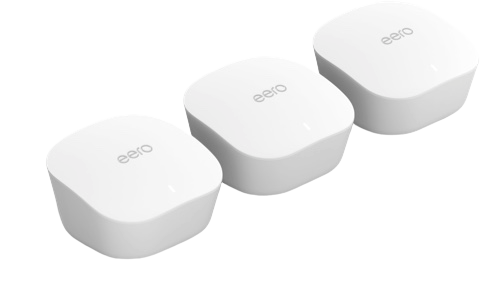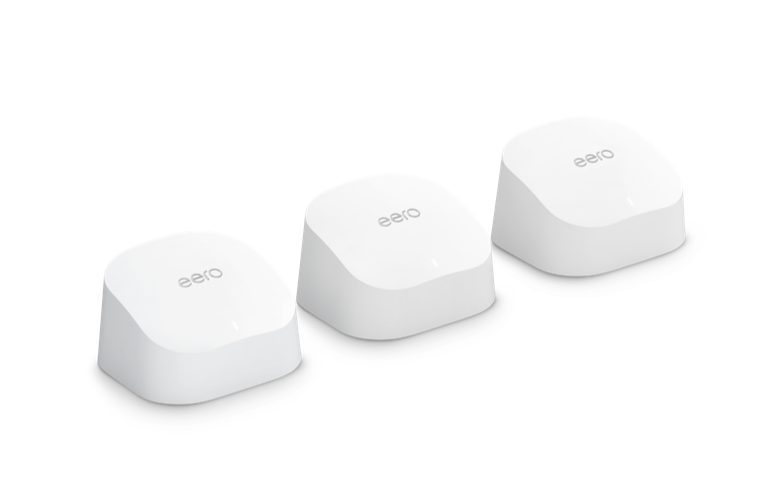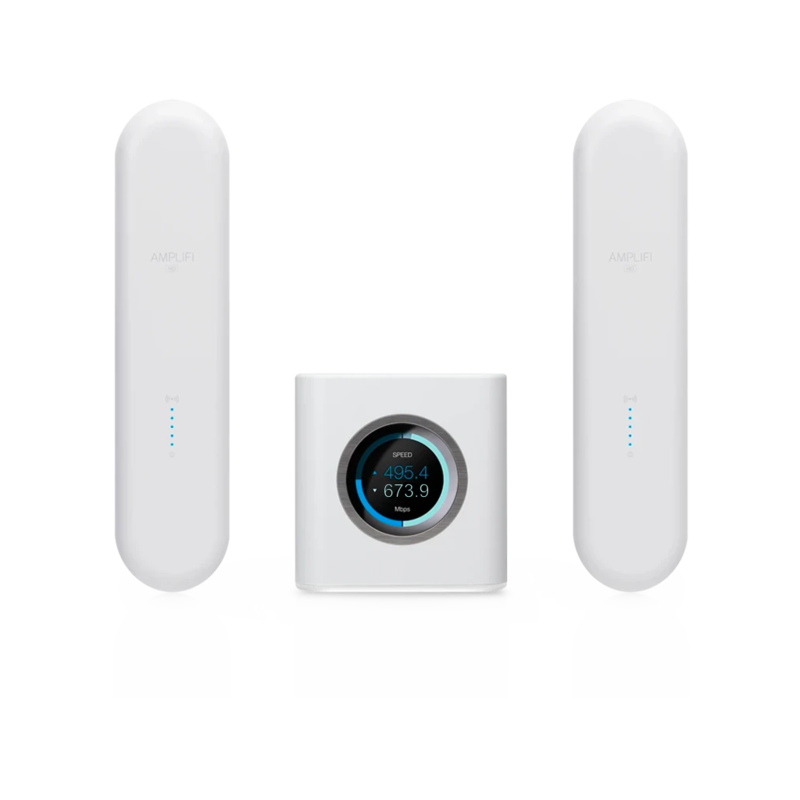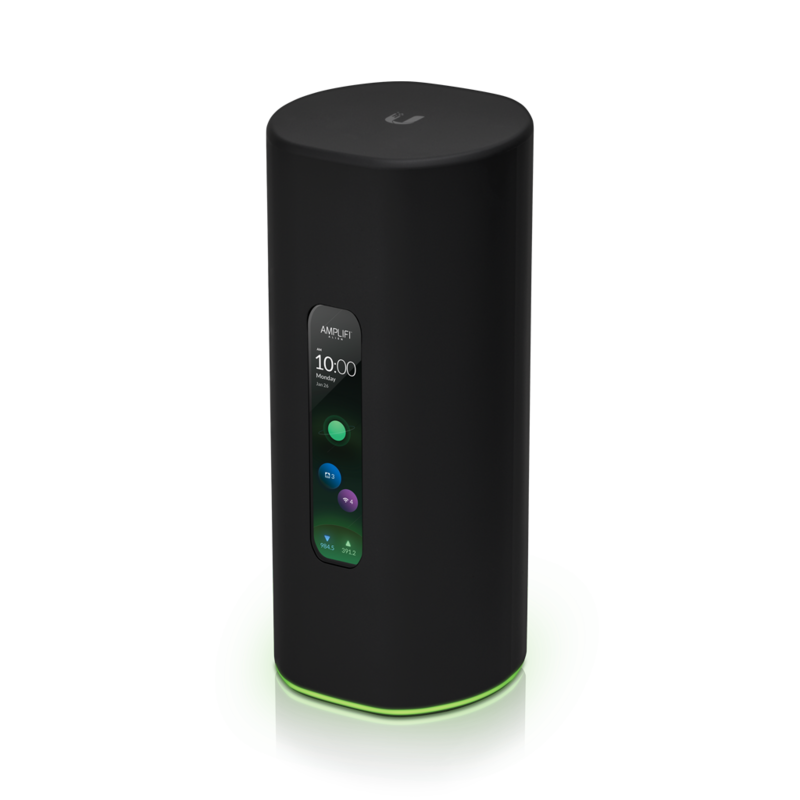Nest Wifi vs. Orbi vs. Eero vs. AmpliFi: Wi-Fi 5 & Wi-Fi 6 comparison
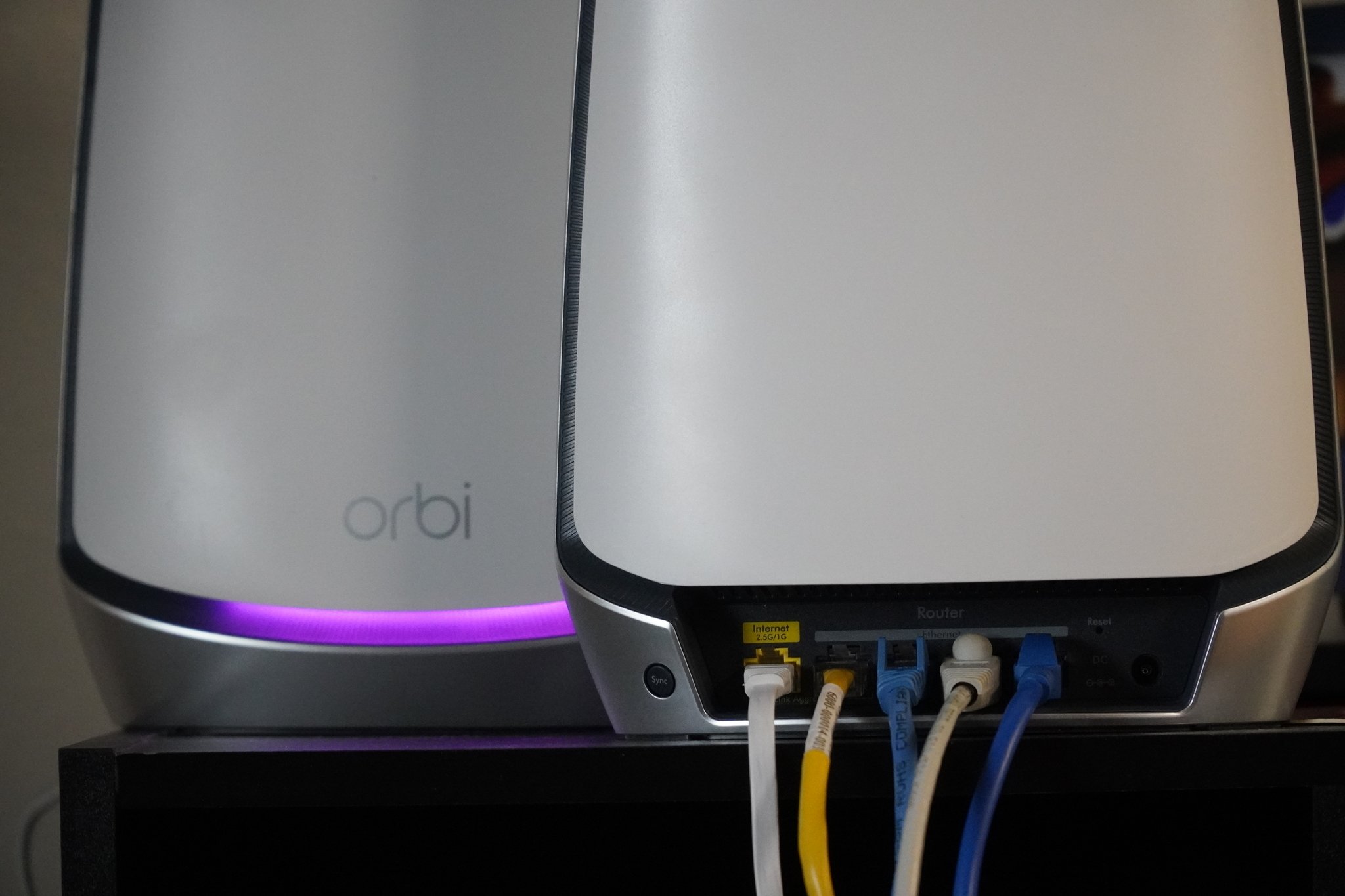
Most people don't put enough thought into their wireless router. Things like the layout of your house, the materials it's made up of, and how many stories it is all matter when you want good Wi-Fi from one end to the other. Or maybe you need to plug something into a router with a network cable in one room but still want great Wi-Fi everywhere else. Finding a networking solution that's flexible enough to meet your current and future needs can be a challenge, and it can be a huge pain to change your router every time you need some more coverage.
This is where wireless mesh networking makes the most sense. Sometimes one central wireless access point that sends out a powerful omnidirectional signal is perfect but often a mesh system delivers a better experience without giving up anything you need. There's a big difference between Wi-Fi in your house that works and Wi-Fi in your home that works well.
If you decide to go with a mesh system, you face the question of which to buy. While many of the best wireless routers have mesh support, these systems are focused on the mesh. There's a ton of choice when it comes to the best mesh router or even the best Wi-Fi 6 mesh routers, but we're going to look at four popular models and give you some information so you can make the right choice.
Mesh Wi-Fi router face-off: Nest Wifi
Google's Nest Wifi is a follow-up to the successful Google Wifi system, which provided a simple mesh system that was easy to expand and offered enough speed for most people. Nest Wi-Fi continues that trend, and as such, Google has elected to only support Wi-Fi 5 since most people have yet to upgrade to Wi-Fi 6 devices. Still, it delivers enough speed for standard usage and should keep up with anything short of a gigabit connection.
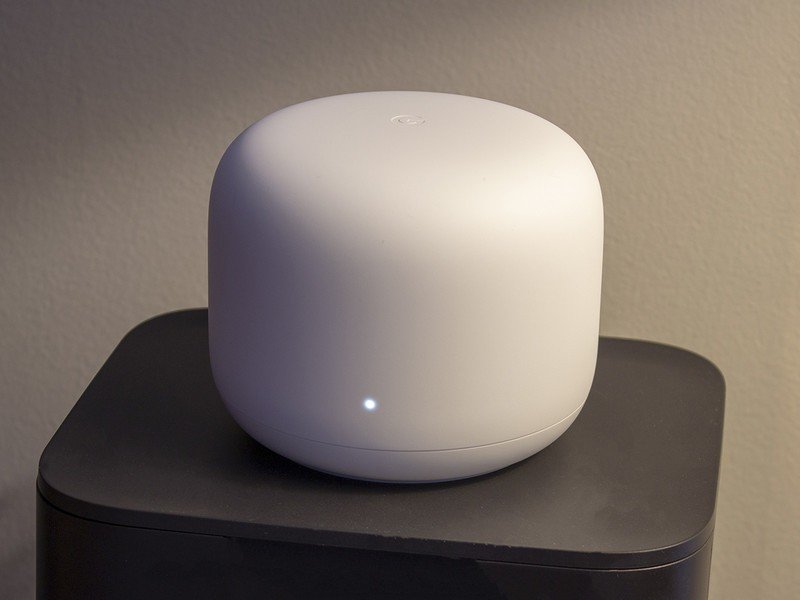
The Wi-Fi 5 option: Nest Wifi
Google has a vested interest in everyone being on the internet, and it's made a great wireless mesh system to help make it happen no matter where in your house you happen to be sitting. Nest Wifi is fast, easy to set up, and even easier to get into the settings thanks to its robust smartphone app for the first-time setup and adding more mesh points.
Pros
Get the latest news from Android Central, your trusted companion in the world of Android
- It looks good — this matters because ideally, you'll have the satellites out in the open where everyone can see them.
- Constant updates
- Setup is so easy it's almost automatic
- Expand with Nest Wifi points, routers, or Google Wifi
Cons
- Few advanced features
- Requires a Google account
- If you lose a connection to the internet, settings and options are minimal
Nest Wifi is the newest addition to the Google Wifi family, increasing the number of compatible Wi-Fi devices to three, filling different needs. The Nest Wifi router is the fastest with the most coverage, while the Nest Wifi point and Google Wifi routers are slower with less coverage. Even so, the lower cost of these other devices makes them a great option for mesh expansion.
If you use Google products, you'll probably love Nest Wifi. Everything about the product will be familiar, from how it looks to the way the app works.
The setup is simple. Power up one of the units and connect it to your modem, then download the app. You'll get a notification that starts the process with a single tap, then walks you through setting up the other two and gives performance tips.
Each Nest Wifi router covers about 2,200 square feet with a strong signal and moving through your house switches you from one to the next seamlessly. The Nest Wifi points add 1,600 square feet while Google Wifi routers add 1,500 square feet. The app has some extra features like prioritizing one device over the others for a set amount of time (perfect for streaming HD video) or parental controls; however, it lacks advanced networking features like dedicated port forwarding. The biggest drawback is what happens if you lose your internet connection — you have limited access to the settings as they are hosted on your online Google account.
Perhaps the biggest draw of Nest Wifi is the prompt updates. They're seamless, and a proper update schedule means your network is more secure even if they aren't always filled with new features.
Mesh Wi-Fi router face-off: Netgear Orbi
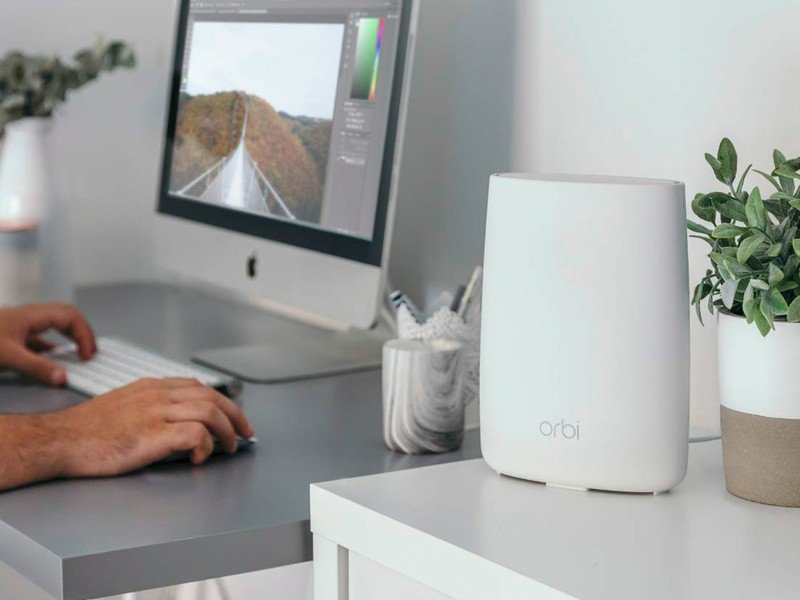
The Wi-Fi 5 option: Orbi RBK50
Netgear's Orbi isn't a mesh wireless system, but it acts the same way and extends your network by using satellite units. Those satellites just aren't connected to each other, only the base. It's still a tri-band system that will give you fast network speeds everywhere in your house, which is what matters.
Pros
- No account required
- No speed loss from mesh forwarding
- The base and satellite are pre-programmed to work together
Cons
- It's big
- It's expensive if you need a second satellite
- Setup can be confusing because there are so many options
First thing's first — if you need advanced settings on your Wi-Fi network and want a mesh(-like) system, Orbi is the one you want to buy, no questions asked. Using your web browser to log into the router brings you to the familiar Netgear setup and admin page with which you're probably already familiar, including options that no other consumer mesh product offers, like advanced QoS and forwarding.
With that out of the way, the Orbi system has one thing going for it that might make a difference — no speed loss because of bi-directional communication. Orbi uses a dedicated band for communication between the units, while some other consumer mesh products use the same band your network data does, which causes a 50% loss in throughput for each "hop." This isn't noticeable for most of us as it's still faster than data can be processed after the loss, but it could make a difference when transferring large files or streaming data inside your network.
Two things aren't great — the sheer size of each unit (easily three times bigger than the others on this list) and the price. It can be more difficult to hide an Orbi satellite, and adding more can be more expensive than its competition. Still, the Orbi line has many options, so a cheaper and slower unit can be added to parts of the home where speed isn't a big deal.
The Wi-Fi 6 option: Orbi RBK752
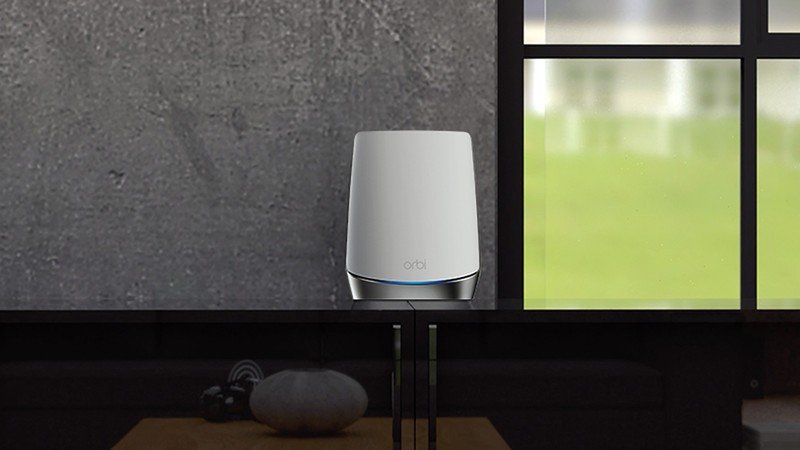
The Orbi RBK752 brings Wi-Fi 6 speeds to an Orbi mesh. With AX4200 speeds, this router has a 2.4GHz and 5Ghz band dedicated to devices capable of 600Mbps and 1200Mbps, respectively. A third 5GHz band is dedicated to connecting the Orbi satellite to the base router. This Orbi really isn't designed to be a standalone unit.
Around the back of the primary router are three vacant Ethernet ports with an additional WAN port to connect to the modem. The satellites have two empty Ethernet ports too. Therefore, if you have a home with a poor wireless signal, you can run an Ethernet cable from the main router to the satellite. It will then automatically utilize it for a more consistent backhaul.
This system is still overkill for most people, but if you want to have fast Wi-Fi 6 connectivity all over your home, there aren't many other routers that can do better.
Let's face it. As cool as gigabit connections are, some people are going even faster. The Orbi RBK852 system is lightning quick. So 2.4GHz speeds upgrade to 1200Mbps, and the 5GHz band for devices gets an upgrade to 2400Mbps. This AX6000 mesh is one of the fastest I've ever tested, and with a 2.5G WAN port on the back, it's ready for the next generation of fiber connections.
Mesh Wi-Fi router face-off: Eero
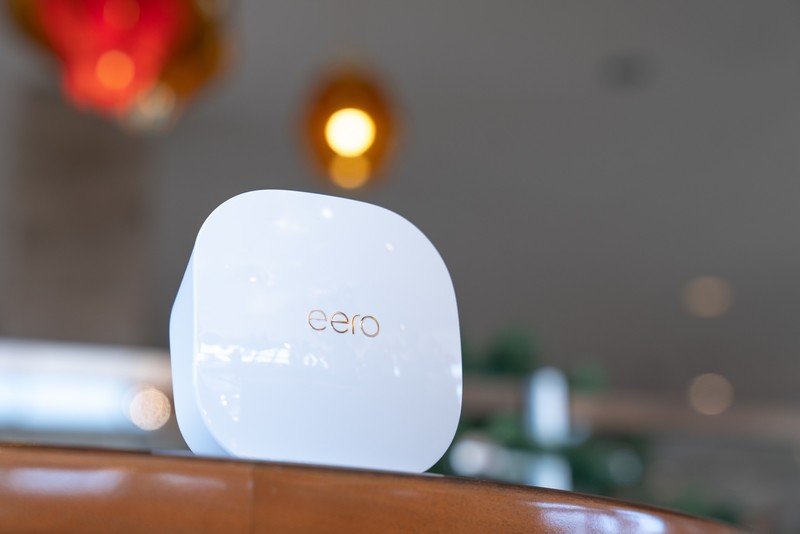
The Wi-Fi 5 option: Eero
The third-generation Eero is the complete package. It comes equipped with a dual-band AC1300 connection and can cover up to 1,500 sq ft with a single router. A mesh made up of this base Wi-Fi 5 Eero is only recommended for internet connections up to 350Mbps, though our testing showed speed closer to 400Mbps. This speed is a result of splitting the 866.6Mbps 5GHz band between the mesh connection and connected device. Still, this is fast enough for most of what people do on their internet connections.
Pros
- Each beacon looks great
- Easy and secure setup
- Expands with any Eero
Cons
- Requires a smartphone to set up
- Limited settings
This Eero can also add to an existing Eero mesh made up of any previous Eero or even the newer Eero 6 variants. Eero's intergenerational compatibility is thanks to a great software experience that automatically keeps all Eeros up to date.
The software experience keeps it up during setup and management, which is simple and robust with the Eero app. You can change the setting most people care about, such as security type and port forwarding. Beyond that, Eero is a bit more limited, aiming for consistency over flexibility. Still, for the majority of people, this is preferable.
The Wi-Fi 6 option: Eero 6

Eero has continued to update its mesh solutions consistently without dropping compatibility in the Eero line. With Wi-Fi 6 onboard, this is one of the cheapest mesh systems you can get that confidently deliver 500Mbps or more. While it's dual-band, its AX1800 speed should be able to keep up with even heavy usage. Even if you don't have Wi-Fi 6 devices yet, you'll get some advantage thanks to a Wi-Fi 6 backhaul connecting the mesh points.
Pros
- Wi-Fi 6 support improves speed and coverage
- Can use an unlimited amount of extenders
- Easy and secure setup
- Expands with any eero
Cons
- Extenders have no Ethernet ports
Eero 6 comes with a respectable speed upgrade over the base Eero jumping up from AC1300 to AX1800. What that means is up to 1200Mbps on the 5GHz bands and a solid 400Mbps at 2.4GHz. While the Eero 6 will need to share that 5GHz connection between devices, 500Mbps should be consistently possible even for older Wi-Fi 5 devices. If you've got a gigabit connection and want to get those speeds all over your home, you'll need to step up to the tri-band Eero Pro 6.
Unlike previous Eeros, the Eero 6 comes packed with Eero 6 extenders rather than identical routers. It brings the package cost down but does mean giving up an Ethernet connection on the extenders. This rules out a wired backhaul for the extenders. Like the older Eero Beacons, these simply extend the mesh; however, they take up way more room. You can build a system out of individual Eero 6 routers if you really need wired features, though.
Despite its shortfalls, Eero manages to deliver a great networking experience, and it largely comes down to its app. The Eero app works consistently and smoothly, whether you're adding new Eeros to your mesh or monitoring your usage. If you want it, there's a subscription service that brings along antivirus software and more advanced parental controls.
If you want to stick with an Eero mesh but need a little more speed, you can upgrade to the Eero Pro 6. This router adds a 5GHz band with a bandwidth of 2400Mbps. Since mesh systems need to share their communication resources with devices and communication with the other nodes in the mesh, a dual-band router like Eero or Eero 6 will need to share its speed between the mesh and wireless devices.
If you need to access your gigabit connection all over your home and a wired connection isn't possible, Eero Pro 6 can deliver. Keep in mind that you'll need a Wi-Fi 6 capable device to access the full speed of this router.
Mesh Wi-Fi router face-off: AmpliFi
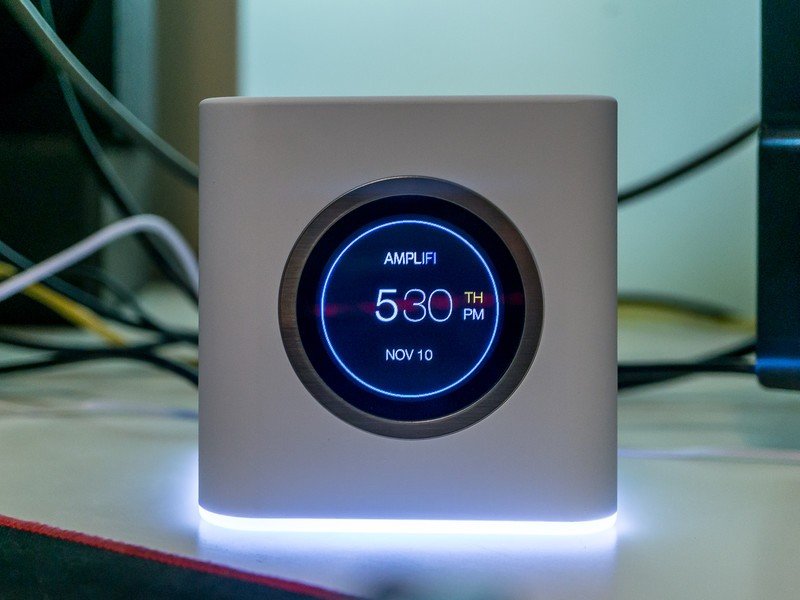
The Wi-Fi 5 option: AmpliFi HD
The AmpliFi HD, from Wi-Fi legends Ubiquiti, looks different from the other products on this list. Each satellite plugs directly into a wall outlet, but each AmpliFi satellite has a large antenna. This makes it easier to find a place for them or harder, depending on where you need them. It delivers good, strong whole-house Wi-Fi like the other products on this list.
Pros
- Five Gigabit Ethernet ports on the base like a traditional router
- Smartphone app or account not required
- More advanced settings than Eero or Google Wifi
- Connection information displayed on the router
Cons
- Satellites are large and require mounting on a wall outlet
- Satellites have no Ethernet ports
- Satellites aren't as attractive as the competition (but are interesting to some)
The AmpliFi HD boasts a 20,000-square-foot coverage area from a single base and two satellites. Our testing leads us to believe that since a usable signal extended further down the street than we thought possible. That's enough reason for some of us to buy it — you might also be able to have great Wi-Fi in your workshop or any outbuilding (or share Wi-Fi with your neighbor). Part of this is because of the unique satellite configuration. Rather than a little puck designed to sit on a table somewhere, each is a tall, two-piece wand that needs to be plugged directly into an outlet.
There's also a coolness factor missing from the others on our list with AmpliFi's touchscreen display on the base that can monitor network speeds or show the time (it can also be shut off). This can be pretty handy if the base is set somewhere like a desk in a home office and can double as a clock, besides having access to some user settings. Speaking of settings, you'll find more advanced ones on the AmpliFi HD than you will on Google Wifi or Eero, but not as many as the Orbi. So it's a good balance for the average home user with something like a dedicated media server.
If you're looking for more speed, AmpliFi also makes the Alien, which features Wi-Fi 6 and is one of the fastest and most capable Wi-Fi 6 mesh setups. It's quite a bit more expensive, however, and overkill for most people.
One thing to consider here is that the AmpliFi HD isn't exactly childproof. However, the satellites will be plugged in where a curious little one can reach them and look interesting enough to make sure they notice them. Also, the newest version of the AmpliFi HD ditches the original beacons' swiveling antenna, making them a bit less flexible but more robust.
AmpliFi also has a slower but much more compact option. AmpliFi Instant comes in a relatively compact puck shape measuring just under four inches wide and 1.3 inches tall. Still, it manages to pack in an Ethernet port on every node and covers up to 2,000 sq ft with each one.
The Wi-Fi 6 option: AmpliFi Alien

AmpliFi Alien is Ubiquiti's newest edition to the AmpliFi lineup, and it aims to regain its mesh coverage and speed dominance. With a total wireless capacity of 7685Mbps, this is one of the fastest Wi-Fi 6 routers in a mesh system. This speed is possible thanks to the 16 spatial streams divided into a 2.4GHz and 5GHz set of Wi-Fi 6 bands and another Wi-Fi 5 band at 5GHz.
If you like keeping up to date on the status of your Wi-Fi without opening an app, you'll love the Alien's large color touch screen. Four Ethernet ports on the back of the router allow you to connect your wired devices but all of the ports, including the WAN port, max out at 1Gbps, making that the maximum internet speed you'll ever see.
The Alien does come in at a reasonably massive 9.84 inches tall and 2.65 pounds, which isn't that much more than comparable fast routers from other companies, is still considerable. However, for all that size, you get excellent coverage. A single Alien router covers up to 3,000 square feet, and adding in a MeshPoint takes that up to 6,000 square feet.
Nest Wifi vs. Orbi vs. Eero vs. AmpliFi: Which should you buy
Companies like TP-Link and Asus have also been making great mesh products, with the former offering some of the best mesh prices around, especially in Wi-Fi 6. For example, the TP-Link Deco X68 is a fast Wi-Fi 6 tri-band system with enough speed for a high-speed internet connection. It's also worth remembering that the next evolution of Wi-Fi 6, Wi-Fi 6E, is pushing rates even further with routers like the Asus ZenWiFi ET8.
Which is best depends a lot on what you're looking for. If you want the most plug-and-play model, Nest Wifi is one of those gems anyone can install. However, nest Wifi does require a Google account, and internet access is almost a must (and absolutely required for setup). Orbi is great for someone running a server or has other needs for advanced QoS and forwarding options but is big, bulky, and expensive. Finally, AmpliFi covers your house, yard, and maybe even your neighbor but isn't perfect for homes with small children.
Eero 6 has managed a significant speed upgrade over the standard Eero bringing your mesh link speed much closer to your gigabit connection and confidently handling 500Mbps. Eero is also compatible with the older Eero routers and Beacons for plenty of expansion options. You can also confidently upgrade since your older Eeros can expand the mesh further.
But really, you can't go wrong with any of these choices. Each has one or two drawbacks and a few strong points, but they all deliver where it counts: providing a robust and fast network connection.

Jerry is an amateur woodworker and struggling shade tree mechanic. There's nothing he can't take apart, but many things he can't reassemble. You'll find him writing and speaking his loud opinion on Android Central and occasionally on Threads.
